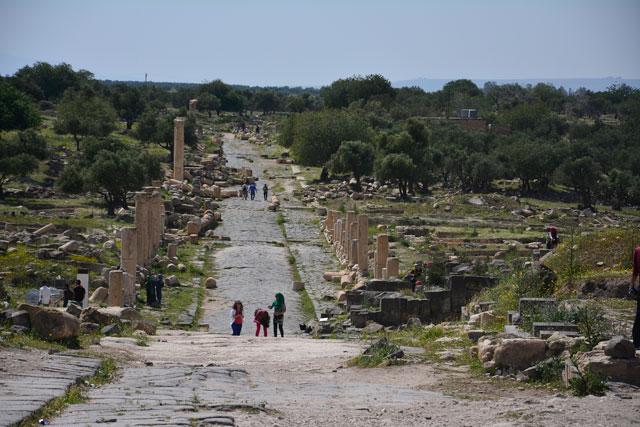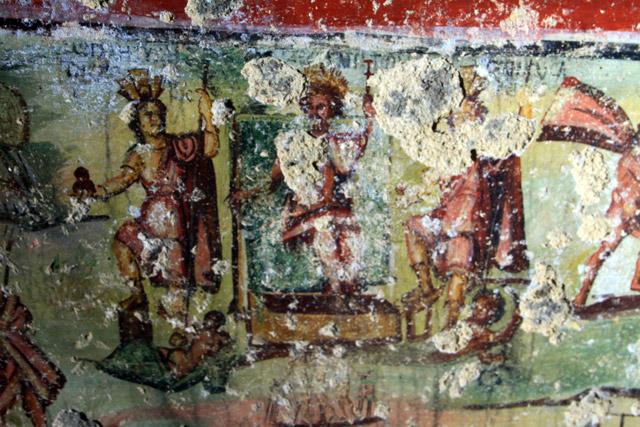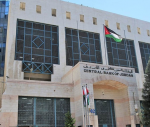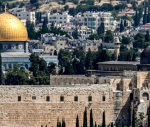You are here
Antiquities agency on defensive as ‘ancient church bulldozed’
By Rula Samain - Nov 14,2016 - Last updated at Nov 15,2016

In this photo shared on social media, a bulldozer purportedly overruns the alleged site of an ancient church in Kherbet Yajouz recently
AMMAN — Reports recently circulated on social media of a Byzantine archaeological site being allegedly bulldozed, with the permission of the authorities, outraged concerned individuals and put authorities on the defensive.
The report, backed by pictures, purported that a bulldozer owned by the Department of Antiquities (DoA) ran over the debris of a Byzantine church at Kherbet Yajouz east of the capital.
The department rejected the story as baseless, with DoA Director Monther Jamhawi charging that it was a tactic by the owner of a land across the road of the said site to “pressure” the department to buy the land, so that it would be classified as a national reserve and, as a result, no one would build in it.
As his request was turned down by the agency, the official said, the man posted a picture on social media showing the department’s bulldozer at the site and over the ruins.
The vehicle was actually there, Jamhawi acknowledged, but it was not bulldozing the ruins of an old church.
“This particular land does have old stones that go back to the Byzantine era, and they are scattered all around. We usually collect old stones that have inscriptions and store them,” he explained.
“Since the stones are too heavy, the department’s workers used bulldozers to move them. This is what it is all about: collecting scattered stones,” Jamhawi said.
The officially identified archaeological site, however, is over 33 dunums in area, of which the department owns 21 dunums, while the rest are privately owned, according to the DoA chief, who added that excavations have been ongoing there for 10 years.
Jamhawi added that such “nonsensical stories” should not be blown out of proportion since they might affect Jordan’s reputation as a unique model of coexistence.
A local resident told the story with different details.
Hmoud Alhaj, an architect, told The Jordan Times that the DoA was moving archaeological findings from the site that included a mosaic floor and walls to warehouses in Tabarbour area.
He cited insiders at the DoA who confirmed his story.
His claims were supported by a veteran archaeologist.
University of Jordan Professor Lutfi Khalil told The Jordan Times over the phone that the privately owned land in question contains a mosaic floor and walls that are still standing.
He said he had learnt that while the owners were digging to construct a residential building, they stumbled upon the remains of a mosaic church floor and informed the officials.
They asked a price for the land that the department could not afford, the professor claimed.
The DoA, he said, decided to move the mosaic floor and the other items found on site.
“In my opinion, maintaining cultural heritage and keeping it where it is found is important and this is the responsibility of the department,” said the academic.
Alhaj agreed.
“I am a Muslim, and I feel it is my obligation towards my historical heritage whether it is Christian or Muslim to keep and protect what is ours.”
Related Articles
AMMAN — In addition to authorities’ efforts to conserve antiquities and archaeological sites, public awareness and people’s commitment to co
AMMAN — A mission of Jordanian archaeologists this week will start excavations on Al Bassah Cave in Iraq Al Amir to unveil whether the site
AMMAN — The Department of Antiquities (DoA) will open a recently discovered archaeological site in Irbid’s Beit Ras area next month, the dep
















